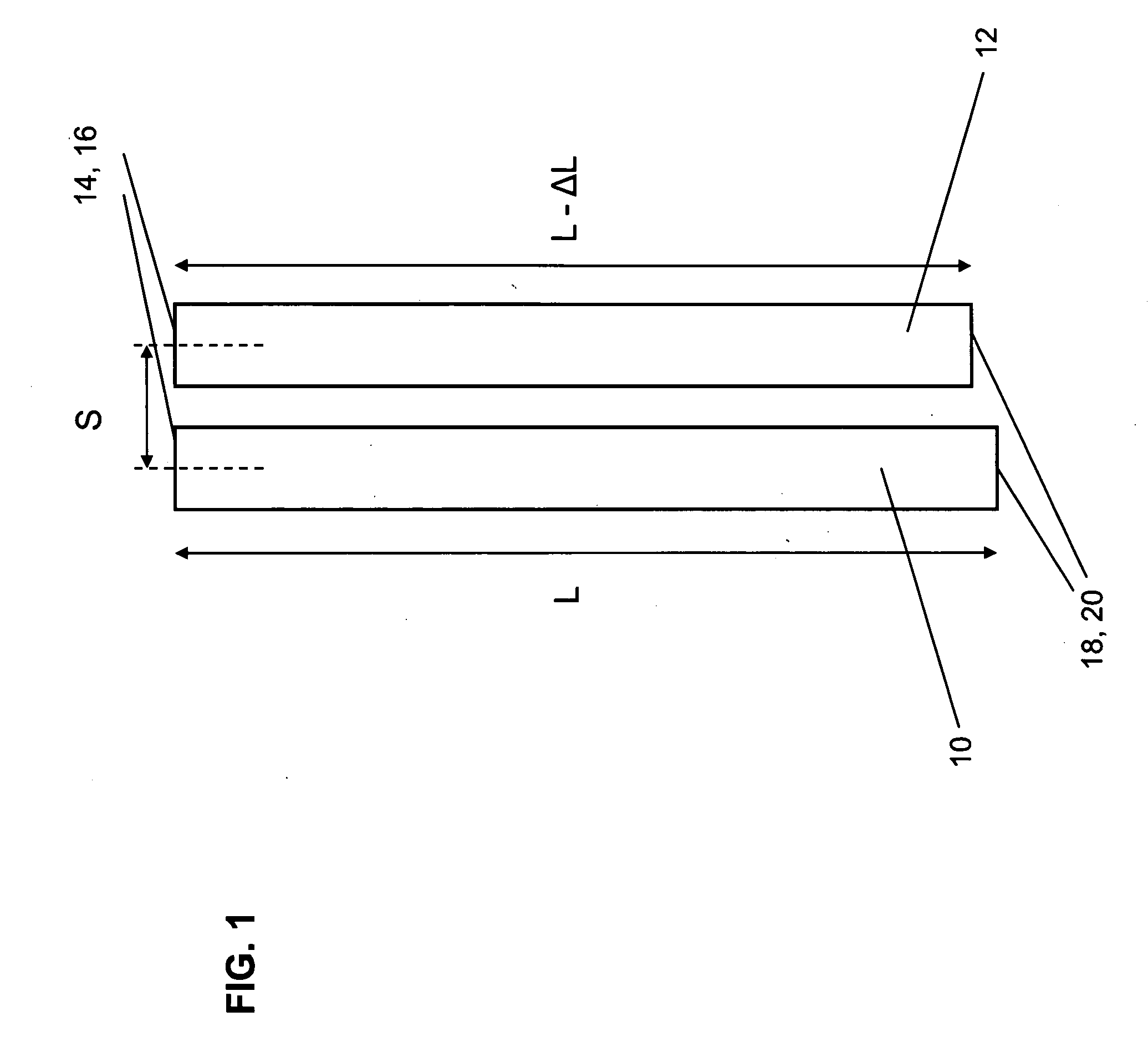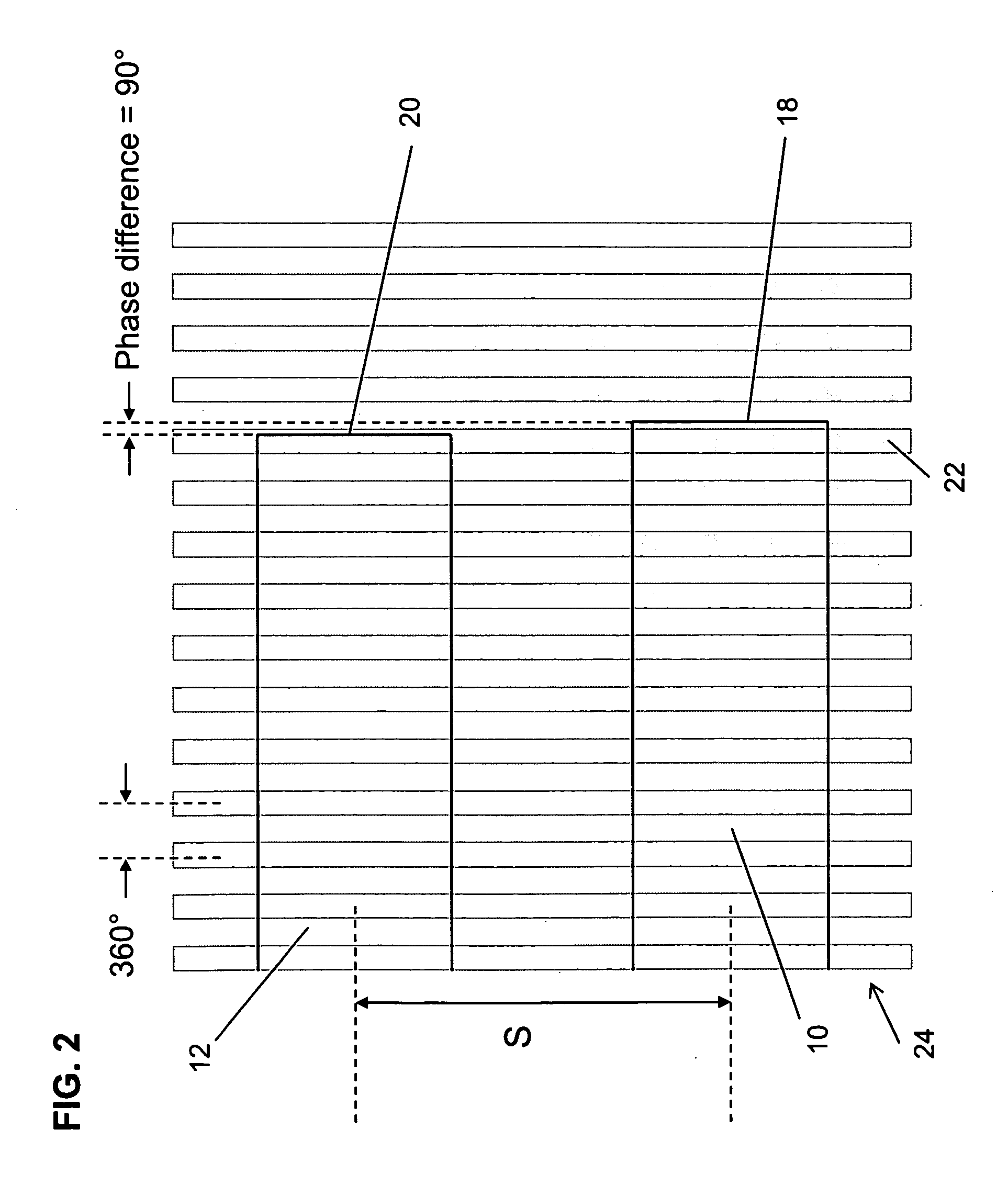Multiple cavity etched-facet dfb lasers
a laser device and multi-cavity technology, applied in semiconductor lasers, laser details, laser optical resonator construction, etc., can solve the problems of laser performance and characteristics, lasers have limited design yield, and conventional lithographical techniques cannot be readily used to further process lasers, etc., to achieve accurate determination and increase chip yield
- Summary
- Abstract
- Description
- Claims
- Application Information
AI Technical Summary
Benefits of technology
Problems solved by technology
Method used
Image
Examples
Embodiment Construction
[0016]The present invention can be applied to a DFB semiconductor laser structure to improve the yield during manufacture thereof. The details of the inventive concept are provided herein following a discussion of the known laser structures and fabrication techniques which are preferably employed in the invention. As is conventional, in the fabrication of solid state ridge lasers, the substrate may be formed, for example, of a type III-V compound or an alloy thereof, which may be suitably doped. The substrate includes a top surface on which is deposited, as by an epitaxial deposition such as Metalorganic Chemical Vapor Deposition (MOCVD), a succession of layers which form an optical cavity that includes an active region. Typically, the grating layer will be near the active region (above or below) and will be patterned with a periodic structure through e-beam lithography, holographic lithography, or nano-imprint technology followed by etching to form the gratings in the grating layer...
PUM
 Login to View More
Login to View More Abstract
Description
Claims
Application Information
 Login to View More
Login to View More - R&D
- Intellectual Property
- Life Sciences
- Materials
- Tech Scout
- Unparalleled Data Quality
- Higher Quality Content
- 60% Fewer Hallucinations
Browse by: Latest US Patents, China's latest patents, Technical Efficacy Thesaurus, Application Domain, Technology Topic, Popular Technical Reports.
© 2025 PatSnap. All rights reserved.Legal|Privacy policy|Modern Slavery Act Transparency Statement|Sitemap|About US| Contact US: help@patsnap.com



